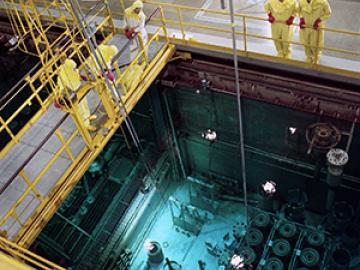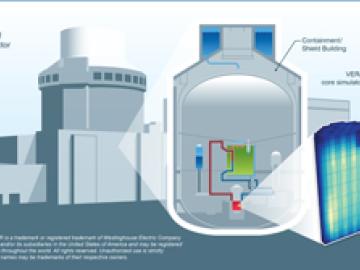Filter News
Area of Research
- (-) National Security (25)
- (-) Nuclear Science and Technology (5)
- Advanced Manufacturing (5)
- Biological Systems (3)
- Biology and Environment (52)
- Biology and Soft Matter (4)
- Building Technologies (5)
- Chemical and Engineering Materials (2)
- Chemistry and Physics at Interfaces (5)
- Clean Energy (68)
- Climate and Environmental Systems (4)
- Computational Biology (2)
- Computational Chemistry (4)
- Computational Engineering (1)
- Computer Science (2)
- Earth Sciences (1)
- Electricity and Smart Grid (1)
- Energy Frontier Research Centers (6)
- Fuel Cycle Science and Technology (1)
- Functional Materials for Energy (10)
- Fusion and Fission (15)
- Geographic Information Science and Technology (1)
- Isotopes (3)
- Materials (74)
- Materials for Computing (13)
- Materials Synthesis from Atoms to Systems (8)
- Materials Under Extremes (5)
- Neutron Data Analysis and Visualization (2)
- Neutron Science (20)
- Nuclear Systems Technology (1)
- Quantum Condensed Matter (2)
- Renewable Energy (2)
- Sensors and Controls (1)
- Supercomputing (54)
- Transportation Systems (3)
News Topics
- 3-D Printing/Advanced Manufacturing (1)
- Artificial Intelligence (3)
- Big Data (2)
- Bioenergy (2)
- Biology (4)
- Biomedical (2)
- Biotechnology (1)
- Buildings (1)
- Chemical Sciences (2)
- Climate Change (4)
- Computer Science (7)
- Coronavirus (1)
- Cybersecurity (5)
- Decarbonization (1)
- Energy Storage (1)
- Environment (1)
- Exascale Computing (1)
- Frontier (1)
- Grid (3)
- High-Performance Computing (1)
- Machine Learning (4)
- Materials (1)
- National Security (13)
- Neutron Science (2)
- Partnerships (1)
- Physics (1)
- Security (3)
- Simulation (1)
- Summit (1)
- Sustainable Energy (1)
Media Contacts

Unequal access to modern infrastructure is a feature of growing cities, according to a study published this week in the Proceedings of the National Academy of Sciences

ORNL scientists had a problem mapping the genomes of bacteria to better understand the origins of their physical traits and improve their function for bioenergy production.

Every day, hundreds of thousands of commuters across the country travel from houses, apartments and other residential spaces to commercial buildings — from offices and schools to gyms and grocery stores.

Three ORNL scientists have been elected fellows of the American Association for the Advancement of Science, or AAAS, the world’s largest general scientific society and publisher of the Science family of journals.

ORNL’s Budhendra “Budhu” Bhaduri has been elected a fellow of the American Association of Geographers. The honor recognizes Bhaduri as “a world leader in innovation, development and application of research in human dynamics, geographic data science, remote sensing and scalable geocomputation.”




Oak Ridge National Laboratory researcher John Wagner has been named a 2013 recipient of the Department of Energy’s Ernest Orlando Lawrence Award for his work in advancing computer, information and knowledge sciences.





